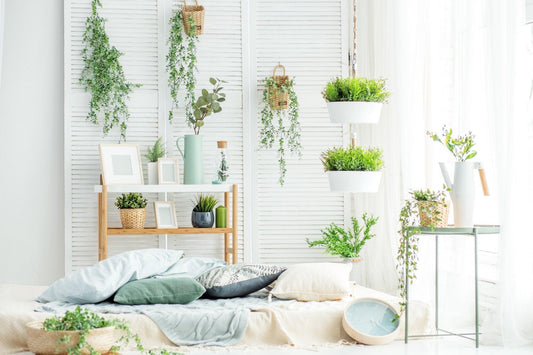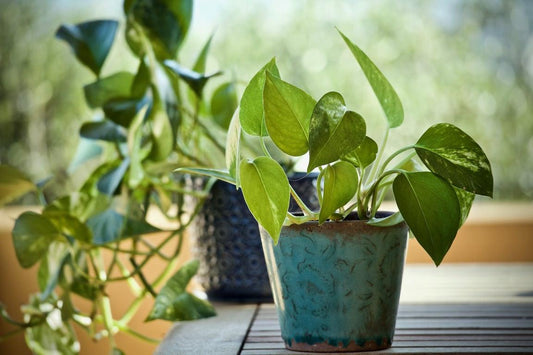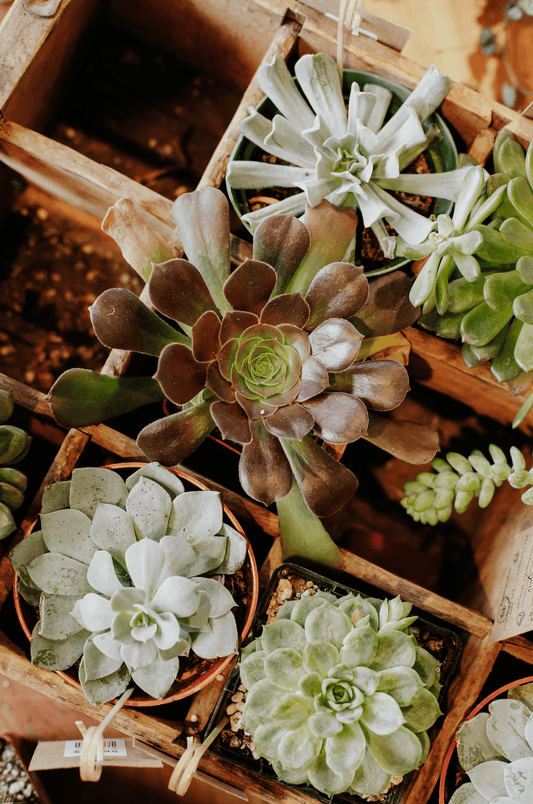Aglaonema
How to Care for the Aglaonema Plant
Overview
Vibrant and colorful, Aglaonemas, also known as the Chinese evergreen, are great indoor houseplants. They’re easy to care for, tolerant to most growing conditions, and thrive in low light, making them a good starter plant for novice gardeners. Native to tropical and subtropical areas of Asia and Guinea, Aglaonemas have a reputation for being lucky plants due to their longevity and striking appearance. They have large, glossy, oval-shaped leaves that come in bold colors—dark green, silver, red—and patterns, which can add a splash of personality to any space.


Profile
Aglaonemas are slow growers that reach up to around 20 inches in height. They’re easy to propagate in water or in soil via stem cuttings. Select a healthy shoot on the parent plant and make a diagonal cut just below a leaf node. If using the water method, make sure to submerge the leaf node when placing the cutting in the container. If using the soil method, fill a small pot with well-draining soil and place the cutting.
Aglaonemas contain calcium oxalate crystals, which are toxic when ingested and may cause dermatitis, or swelling of the mouth and throat if the sap comes into contact with skin.




low light
Aglaonemas do best when placed in spots where they can receive bright, indirect light. It is worth noting that variegated varieties with whiter leaves require brighter light, while darker green varieties can thrive in lower light. These plants cannot tolerate direct sunlight as this will cause leaf burn. In most cases, aglaonemas even do well in fluorescent lighting when placed in windowless rooms. They can survive in low humidity environments, but will do much better in higher humidity environments.

occasional
Temperature-wise, they do best in the 65-75°F range. Exposure to cold drafts, and sudden shifts in temperature will harm your aglaonemas.
Using filtered water, water when the soil is 100% dry, and make sure to drain any excess that accumulates in the saucer to avoid root rot.
Aglaonemas aren’t too picky when it comes to soil; well-drained soil types that hold some moisture are perfect.

easy breezy
Aglaonemas are slow growers that do well when slightly root-bound and will not require repotting more than once every 2-3 years. Choose a pot no bigger than 2 inches larger than the original pot, each time you repot.
FREQUENTLY ASKED QUESTIONS (FAQs)
on AGLAONEMAS
Why are my Aglaonema’s leaves deformed?
This may be due to copper deficiency, which happens when temperatures are too low (below 65°F). You can tell your plant has this problem if its new leaves are yellow and small with kinked edges. To solve this, treat your plant with a micro-nutrient spray with copper as a primary ingredient and keep it in a warm and humid spot.
Why are my Aglaonema’s leaves curling?
When receiving too much direct sunlight, your plant’s leaves may curl. Move it to a spot with bright, indirect light, but be mindful that insufficient light may cause the leaves to wilt and weaken.




